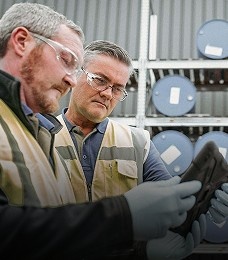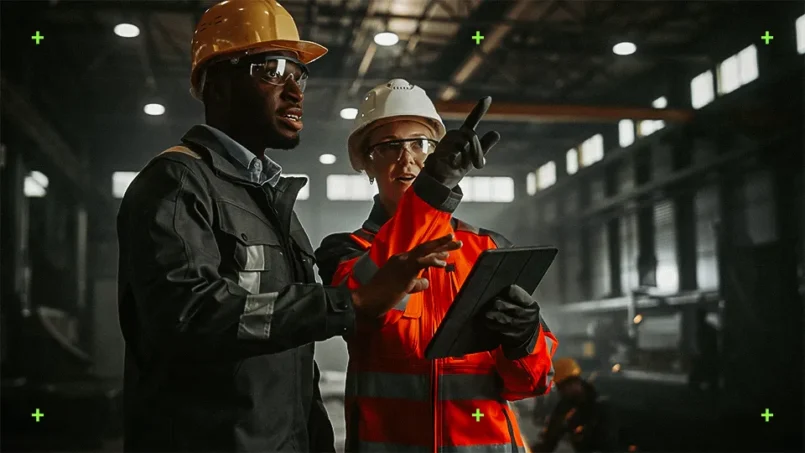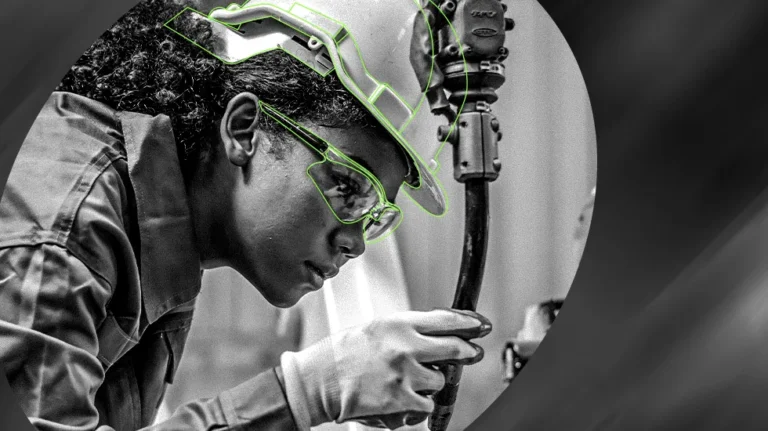By Phil Molé, MPH
Welcome to the fourth blog in our ongoing series on AI and EHS!
- In our first post, we provided a general overview of the topic, introducing it to EHS pros curious to learn more about the ways AI can support their life’s work of keeping people safe.
- Our second post took a closer look at machine learning (ML) and its relevance to EHS professionals like you.
- And our last post argued why AI offers a generational opportunity to improve EHS management, focusing on its ability to help quickly assess and control major safety risks.
In this latest post, you’ll learn more about one of the key benefits of AI for EHS management—speed with purpose.
Speed as a Safeguard
In today’s complex operational environments, speed is more than a competitive advantage—it’s a safeguard. For organizations managing Environmental, Health, and Safety (EHS) programs, the ability to quickly identify and respond to risks can mean the difference between a near miss and a serious, life-altering incident. This urgency is particularly critical when it comes to Potentially Serious Injury or Fatality (PSIF) risks, where even minor delays in detection or response can have devastating outcomes.
At VelocityEHS, we believe that speed and precision are the cornerstones of effective risk management. That’s why we’re investing in advanced artificial intelligence (AI) capabilities designed to help organizations act faster and smarter.
Why Speed Matters in Risk Management
Every day, frontline workers and EHS professionals generate a huge volume of data—observations, inspections, incident reports, maintenance logs, and more. Buried in this information are early warning signs of serious risk. Unfortunately, traditional processes often struggle to keep up, for these reasons:
- Manual review is too slow: By the time a pattern is recognized, it may already be too late.
- Inconsistent data quality: Unstructured text, incomplete reports, and subjective assessments make it hard to see what’s important.
- Information silos: Critical details often remain locked in spreadsheets, email threads, or isolated systems, slowing down cross-team response.
For PSIF risks particularly, any delay in recognizing hazards—such as unsafe equipment, recurring near misses, or overlooked process failures—dramatically increases the chances of a severe outcome.
How AI Accelerates Risk Detection and Response
AI-powered tools close the speed gap in EHS risk management. Here’s how:
- Rapid Pattern Recognition
AI can quickly scan thousands of safety observations, incidents, and audit findings to detect recurring themes and anomalies that humans might miss. What once took days or weeks to analyze can now be surfaced in near real time.
- Prioritization of Critical Risks
Not all risks are equal. AI helps separate less severe hazards from those with PSIF potential, ensuring safety leaders know where to act first. This prioritization reduces noise and focuses attention where it matters most.
- Predictive Insights
AI doesn’t just analyze what happened—it helps predict what might happen next. By modeling risk trends, organizations can proactively address vulnerabilities before they escalate into major injuries.
- Better Root Cause Analysis and Corrective Actions
When accidents do happen, you need to be able to correctly identify the underlying causes, as well as choose corrective actions that will effectively prevent recurrences. In both cases, EHS personnel may sometimes face paralysis from too many choices, especially if they’re using software that directs them to choose root causes from a drop-down menu. AI capabilities break through these roadblocks by accurately suggesting root causes based on the incident description and recommending appropriate corrective actions.
The Human-AI Partnership
While AI delivers speed and scale, human judgment remains essential. VelocityAI augments the expertise of EHS professionals by handling the data-heavy lifting, giving them more time to focus on root cause analysis, worker engagement, and building a culture of safety. The result? Faster, better-informed decisions and safer workplaces.
AI Gives You Speed with Purpose
In EHS, speed saves lives. The ability to quickly identify, prioritize, and act on PSIF risks ensures that organizations aren’t just reacting to incidents but preventing them. At VelocityEHS, our mission is to equip companies with the technology and intelligence to move at the speed of safety.
That’s why VelocityEHS combines our decades of EHS expertise with cutting-edge AI. We’re helping organizations see risks sooner, respond faster, and ultimately protect what matters most: their people.
Looking for More Information?
Stay tuned for future installments of our AI and EHS blog series, where you’ll learn more about AI, specific use cases for AI in EHS management, considerations when evaluating EHS software and vendors, and more!
In the meantime, you can visit our AI Glossary & Learning Hub to continue learning on your own. There, you’ll find a curated list of resources covering various aspects of AI and EHS, as well as definitions of common terms.
We also invite you to download and read our new white paper, “Why EHS Professionals Can’t Afford to Ignore AI.” You’ll get a deep dive into all of the reasons why EHS pros like you have a generational opportunity to use AI to pivot from a reactive safety management approach to a proactive approach that reduces injury rates and fosters a positive safety culture. From there, you can also get some guidance on what to look for when selecting an EHS software vendor with AI capabilities with our new AI vendor evaluation checklist.
Let VelocityEHS Help!
If you’re ready to jump to the part about how Velocity can help, we’re standing by to talk!
We’d love to tell you more about how our VelocityEHS Accelerate ® , powered by Velocity AI and its interactive assistant Vélo, can help you end the cycle of struggling to keep up and start the cycle of staying a few steps ahead of hazards and risks.
We’re also looking forward to sharing more about our new capabilities. These include PSIF Insights, and several AI-enabled enhancements. For example, AI is helping us improve root cause analysis, strengthen incident descriptions and JSA job task descriptions, and support better controls selection in ergonomics assessments and JSAs. It’s also enabling the auto-processing of contractor documents. And that’s just the beginning.
In fact, why not see for yourself how we can help? Get in touch today to set up a meeting so you can see our software in action!














